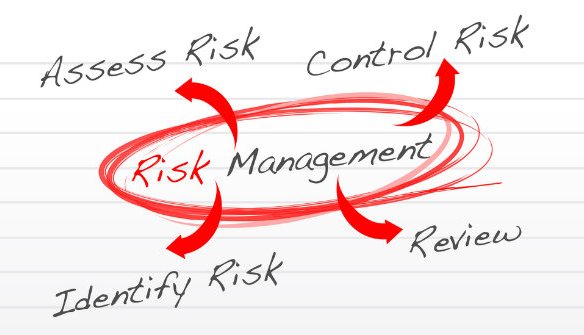Project Risk Management

Estimated reading time: 5 minutes

Project Risk Management
Project risk management is defined as the process of identifying, analyzing and then responding to any risk that arises over the life cycle of a project to help the project remain on track and meet its goal. Risk management is not a reactive approach, but a proactive approach that should be part of the project planning process. It involves figuring out the possible risks and how to control that risk if it occurs.
Projects involve many risks that could affect your project’s timeline, performance or budget. Examples of risks include costs, schedule and resources. Risks need to be addresses, thus, risk management is the process of identifying, categorizing, prioritizing and planning for risks before they become occur and become issues. For example, having delay in the schedule causes your project to be delayed by two weeks. As a project manager, you need to be aware of any and all risks that could affect your project. Hence, project management is also called opportunity management. It is the ability to seize opportunities, minimize threats, and achieve optimum results.
How to Manage Risk
To effectively manage project risk, begin with a clear and precise definition of what your project has been tasked to deliver. This is done through a detailed project brief, allowing risks to be identified at every stage of the project. It also involves talking to the management to raise awareness on the potential risks of the project, to avoid a potential problem in the future.
Risk Management
Risk management can mean different things on different types of projects. On large-scale projects, risk management strategies might include extensive detailed planning for each risk to ensure mitigation strategies are in place if issues arise. For smaller projects, risk management might mean a simple, prioritized list of high, medium and low priority risks.
Risk Management examines threat and opportunity from both a top-down and bottom-up perspective using a proven eight-step risk management process. There are various effective tools, including a highly regarded risk assessment model, to know how to evaluate and respond to risk at the project and task levels. You will then be able to identify, quantify, control and respond to risk in the context of the project life cycle through a risk management plan. This risk management plan will provide you with the ability to monitor and control risks throughout the execution of the project by identifying new risks, reassessing existing risks, and monitoring risk triggers.
Project Risk Management is a 3-day training course held from 23-25 September 2019 (Kuala Lumpur). In this 3-day course, you’ll work through the proactive approach to threat and opportunity—based on a clear understanding of the powerful nature of both qualitative and quantitative approaches to risk management. You will be able to effectively pinpoint the various types of risks, identify, analyse and prioritise risk, master the various risk-based financial tools and techniques.
 |
